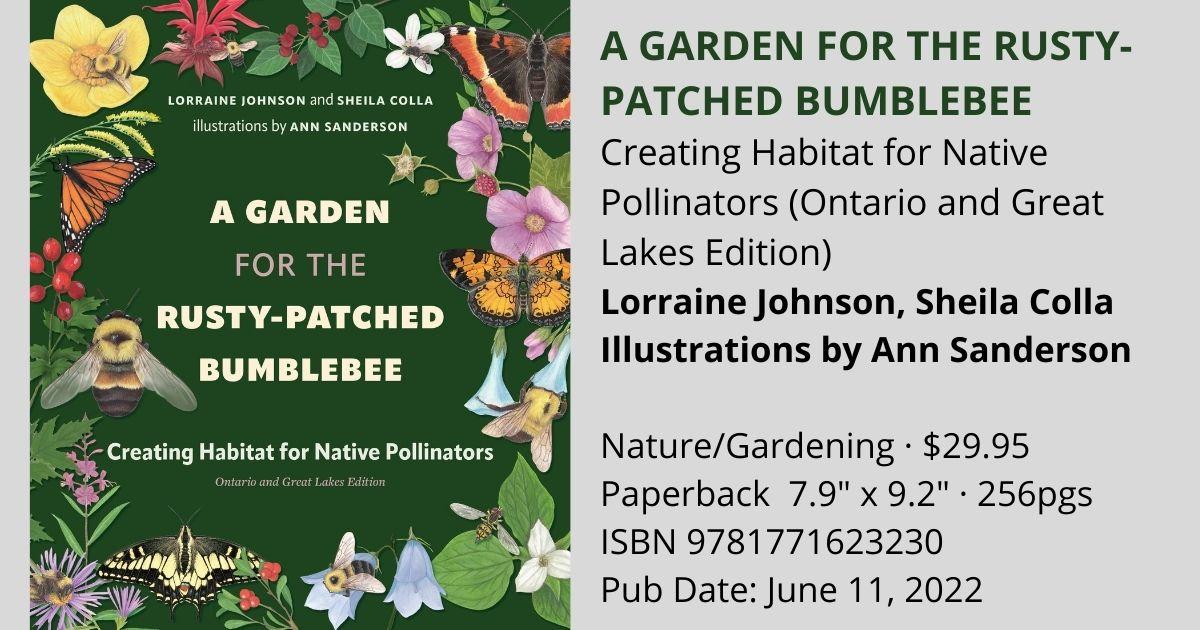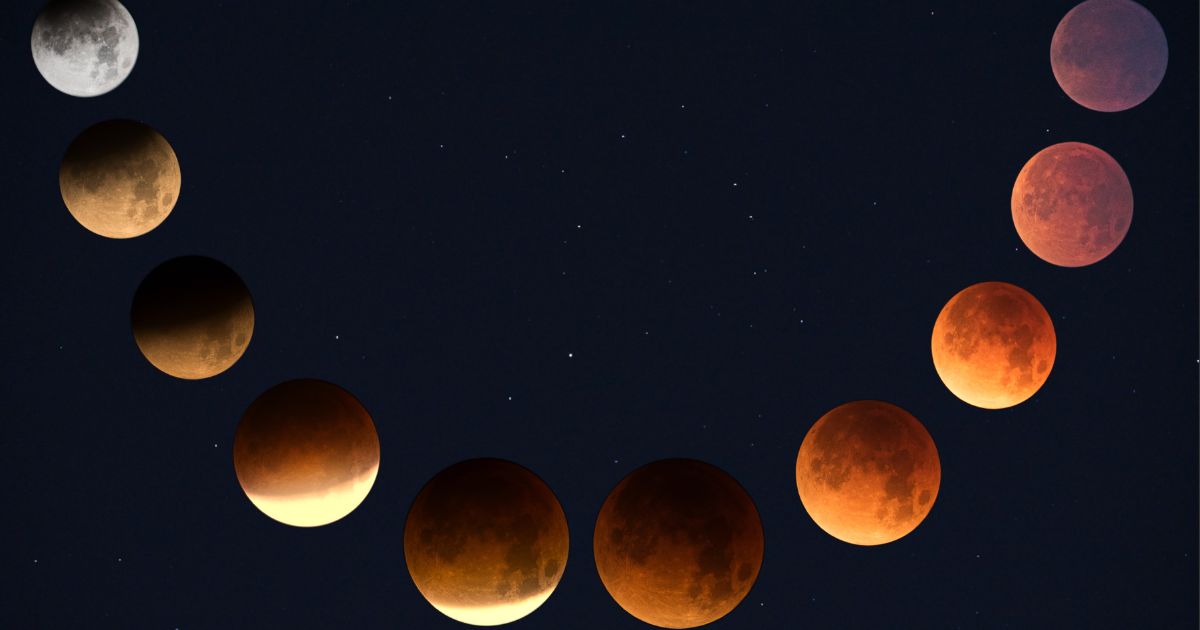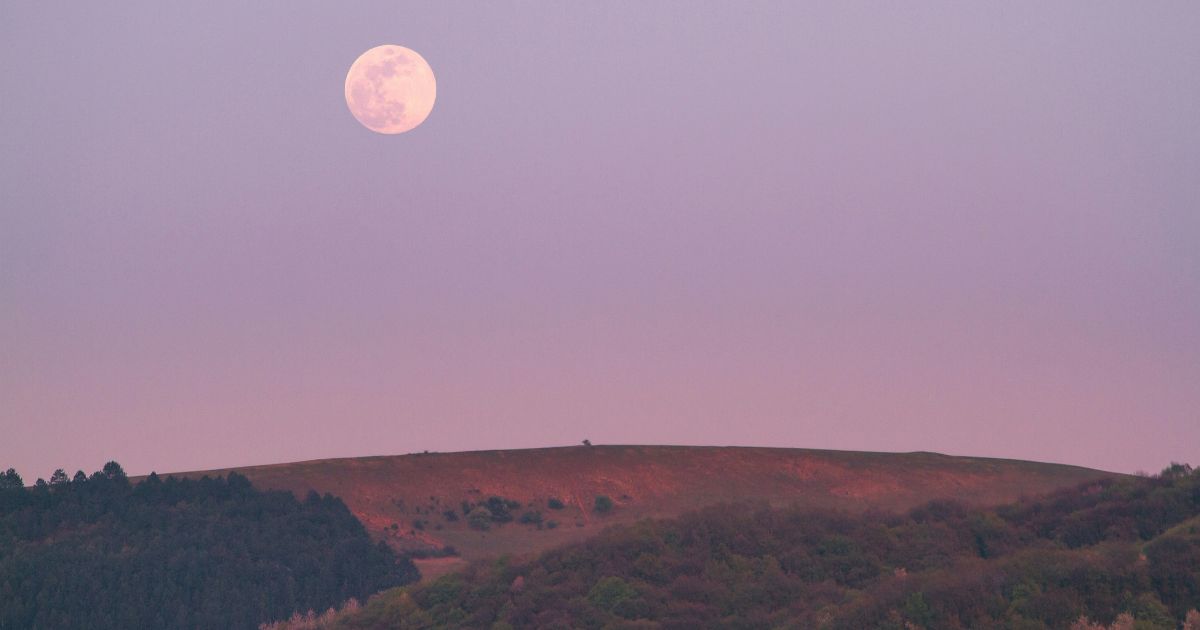“What a valuable, comprehensive, timely, and beautiful resource! Lorraine
Johnson and Sheila Colla provide the rationale, urgency, and detailed knowhow for restoring essential pollinator habitats, not only for the rusty-patched
bumblebee, but for all of Ontario’s pollinators. Just a fantastic contribution!”
~Douglas Tallamy, author of Bringing Nature Home
• Tips on getting started
• Maintaining your pollinator patch
• Profiles of more than 300 native perennials, shrubs, trees and vines
• Sample garden designs
• Recommended plant combinations
• Detailed information on specific pollinators supported by specific plants
“Saving the Bees” is an environmental cause that resonates with Canadians. There are over
350 native bee species in Ontario (860 in Canada) that are threatened by climate change,
habitat loss and fragmentation, disease and competition from non-native species and modern
intensive agriculture.
A Garden for the Rusty-Patched Bumblebee provides all the information needed to create
native-plant-focused habitats in yards and community spaces, on balconies and boulevards in
Ontario and the Great Lakes region.
What’s the buzz on:
• Gardening as Climate Action – how is planting habitat with native plants a climate action
and what impact does climate change have on pollinators?
• The important role of pollinators to food security and ecosystem health – biodiversity is
the linchpin for both bees and people.
• Native versus Non-native Plants – why focus on native plants? Won’t any plants help
pollinators?
• Gardening and Wellness – the impact of gardening on personal and community health.
• Beyond Native Plants – What are some of the maintenance practices in the garden,
beyond planting native plants, that we can do to help pollinators?
INSPIRED BY A Garden for the Rusty-Patched Bumblebee
10 GARDEN-RELATED ACTIONS THAT WILL HELP POLLINATORS
Take a look at your lawn (if you have one) and consider whether or not you could replace some areas of
lawn with low-maintenance native shrubs instead. A big advantage: no mowing necessary with shrubs!
Plant native plants. Even just one! Watch the astounding array of creatures who visit. Consider sending
photos of these visitors to a community science project such as e-butterfly.org, bumblebeewatch.org and inaturalist.ca. This will help scientists establish baseline data and monitor changes in species
populations.
Join with your neighbours to create connected ribbons of habitat by planting native plants on the
grounds of your apartment building, patches in frontyards and backyards, on boulevards, or in other
public spaces such as schoolgrounds, community gardens, faith centres, etc.
Plant at least one (ideally, more!) native tree(s)—for the future.
Plant containers with easy-to-grow native plants such as black-eyed Susans and asters, and put the pots
in a sunny spot on your balcony or deck.
Ask a teacher or the administrators at a local school if they’ve thought of planting native trees, shrubs
and perennials in order to create a habitat area where kids can learn about nature and engage with
natural processes.
Leave the leaves where they fall in autumn and let them decompose naturally. And leave plant stalks
standing: their seeds feed the birds and their pithy/hollow stems provide nesting sites for bees.
Add a few dead logs (called “nurse logs” or “habitat logs”) to your yard, garden or community garden—
they provide great habitat along with visual interest and beauty.
Join local stewardship groups creating native plant habitat for pollinators. These groups are great
sources of information and support and often share seeds and plants!
Read local native plant nursery catalogues online and prepare to be seduced by the beauty, function
and versatility of these wonderful garden plants.
INSPIRED BY A Garden for the Rusty-Patched Bumblebee
10 ACTIONS BEYOND THE HABITAT PATCH
- Engage in informal seed exchange networks by sharing your native seeds with other gardeners.
- When you buy plants at a nursery, ask if their plants are grown organically and without neonicotinoids,
which are linked to negative effects on pollinators. Purchase plants and seeds produced without the
use of neonics. - Support farmers who grow food organically, biodynamically and/or small-scale and with diverse
cropping by purchasing from them whenever possible. Industrial-scale agricultural production, based
on high inputs of synthetic chemicals known to kill beneficial insects along with pests, is implicated not
only in the decline of pollinators but in numerous other ecologically harmful effects. Support farmers
whose land management practices include the creation of wildlife habitat along with the production of
food. - Advocate for the reduction of pesticide use in agriculture, golf courses and the horticultural industry.
- Advocate for the protection of habitat, urban forests, ravines, wetlands, green spaces and parks
whenever and wherever these are under threat, and advocate for the inclusion of high-quality habitat,
urban forests, community gardens, green spaces and parks in any new development. Talk to your local
business association and policy-makers about choosing native plants in sidewalk planters and along
roadsides. - Work with your municipality and fellow native plant gardeners to reform grass and weeds bylaws that,
in most places, are rife with vague, arbitrary and aesthetically based terms that can have a chilling
effect on naturalization efforts. Help to “weed” out bad bylaws! Demand specificity in these bylaws
(name the prohibited “weeds”) and an end to subjective enforcement. - Encourage your municipality to delay yard “waste” collection until as late in the spring as possible.
Many municipalities begin collecting yard “waste” early in the spring, which means that people start
bagging up dead leaves and other organic materials when many insects are still using them for habitat.
Urge your municipality to do a public education campaign around the importance of leaving dead
leaves and standing stalks to decompose naturally in yards and gardens—they provide crucial habitat all
year round. - Contribute to community science by photographing the wildlife that visit your planting and sending
images to projects such as e-butterfly.org, bumblebeewatch.org and inaturalist.ca. This will help
scientists establish baseline data and monitor changes in species populations. - Explore—and take to heart and to action— the connections between reconciliation, treaty
responsibilities, climate justice and tending the earth. As written in the Truth and Reconciliation
Commission Report, 2015, “Reconciliation between Aboriginal and non-Aboriginal Canadians, from
an Aboriginal perspective, also requires reconciliation with the natural world. If human beings resolve
problems between themselves but continue to destroy the natural world, then reconciliation remains
incomplete.” - Consider that, in Ontario and indeed globally, Indigenous Peoples have cared for and continue to care
for lands with among the greatest extent of biodiversity and intact ecosystems found anywhere. In this
region, for example, Walpole Island First Nation (Bkejwanong Territory) stewards the largest extent of
tall grass prairie in the province, and Six Nations stewards the largest extent of intact forest remaining
in southern Ontario. Supporting Indigenous sovereignty is an important way to support biodiversity.
ADVANCE BUZZ FOR THE BOOK
“What a valuable, comprehensive, timely, and beautiful resource!
Lorraine Johnson and Sheila Colla provide the rationale, urgency, and detailed know-how for restoring essential pollinator habitats, not only for the rusty-patched bumblebee, but for all of Ontario’s pollinators.
Just a fantastic contribution!”
~Douglas Tallamy, Author of Bringing Nature Home
“Combining the extensive knowledge of a renowned author and bee researcher, this engaging and accessible book showcases multiple ways to enhance or convert a garden into a thriving habitat for wild bees. This book has it all: sample garden plans, beautiful illustrations and photographs, a comprehensive section profiling native plants and the specific pollinators the plants support, answers to common pollinator gardening questions, and a discussion about the critical link between native plants and pollinators. With its broad appeal, Ontario gardeners will treasure this extremely informative book.”
~Heather Holm, Pollinator Conservationist and Author of Bees: An Identification and Native Plant Forage Guide
“Saving the bees requires planting native plants, lots of native plants!
This gardening book distills critical information about wild, native bees while offering abundant detail, photos, planting guides and references for gardeners. It’s a book I highly recommend for planting season and
for the dreaming season, too, in winter.”
~Beatrice Olivastri, CEO, Friends of the Earth Canada
“A Garden for the Rusty-Patched Bumblebee is a call to action from Johnson and Colla that will inspire you to look, think, and act differently in your garden. You’ll get a primer on pollinators and learn why native plants matter. They’ll walk you through the simple steps of turning lawns into gardens or an existing garden into a pollinator paradise. Even urban and balcony gardeners will discover how to make a difference in the smallest of spaces.”
~Niki Jabbour, Author of Groundbreaking Food Gardens and The Year-Round Vegetable Gardener
“Johnson and Colla bring us a glorious manifesto about gardening for bumblebees, and other pollinators. Profusely illustrated, it highlights dozens of pollinator-worthy flowering plants for home and community
gardens. An encyclopedic but highly accessible book that belongs with every gardener and naturalist.”
~Stephen Buchmann, Author of The Reason for Flowers
“This book is beautifully written, wonderfully illustrated, and essential reading for any gardener interested in supporting pollinators and the ecosystems in which they find themselves. Seldom is there a reference that is so delightful to peruse. It gives even a beginning naturalist a sense of hope, a feeling that even a simple gardener can do something both meaningful and beautiful for their gardens, for their garden’s pollinators, and ultimately, for their whole community.”
~Olivia Messinger Carril, Co-author of The Bees in Your Backyard
AUTHOR BIOS A Garden For The Rusty-Patched Bumblebee
Lorraine Johnson is the author of more than ten books. Her work engages with community issues and projects centred on habitat, urban food growing and land access. Her first book, Green Future, was published in 1990 and empowered individuals with environmental information for action. Her groundbreaking book on native plant gardening, The Ontario Naturalized Garden, was published in 1995, when it was illegal to grow milkweed in Ontario; Lorraine continues to advocate for the reform of grass and weeds bylaws.
lorrainejohnson.ca
Sheila Colla is a conservation scientist and associate professor in the Faculty of Environmental and Urban Change at York University. Her research is interdisciplinary and includes understanding the conservation statuses of and threats to wild bumblebees. She also works closely with environmental non-governmental organizations, government agencies and community scientists to apply science in real-world settings. She previously published The Bumblebees of North America: An Identification Guide (Princeton University Press 2014) and helps run the community science program BumbleBeeWatch.
savethebumblebees.ca
Ann Sanderson is a freelance illustrator with a lifelong fascination with both science and the arts. She lives in Toronto, where she enjoys gardening and visually documenting the plants and wildlife of the city and surrounding greenspaces.
annsciart.com

Lorraine Johnson is the author of more than ten books. Her work engages with community issues and projects centred on habitat, urban food growing and land access. Her first book, Green Future, was published in 1990 and empowered individuals with environmental information for action. Her groundbreaking book on native plant gardening, The Ontario Naturalized Garden, was published in 1995, when it was illegal to grow milkweed in Ontario; Lorraine continues to advocate for the reform of grass and weeds bylaws. https://lorrainejohnson.ca/
Sheila Colla is a conservation scientist and associate professor in the Faculty of Environmental and Urban Change at York University. Her research is interdisciplinary and includes understanding the conservation statuses of and threats to wild bumblebees. She also works closely with environmental non-governmental organizations, government agencies and community scientists to apply science in real-world settings. She previously published The Bumblebees of North America: An Identification Guide (Princeton University Press 2014) and helps run the community science program BumbleBeeWatch. https://www.savethebumblebees.ca/











